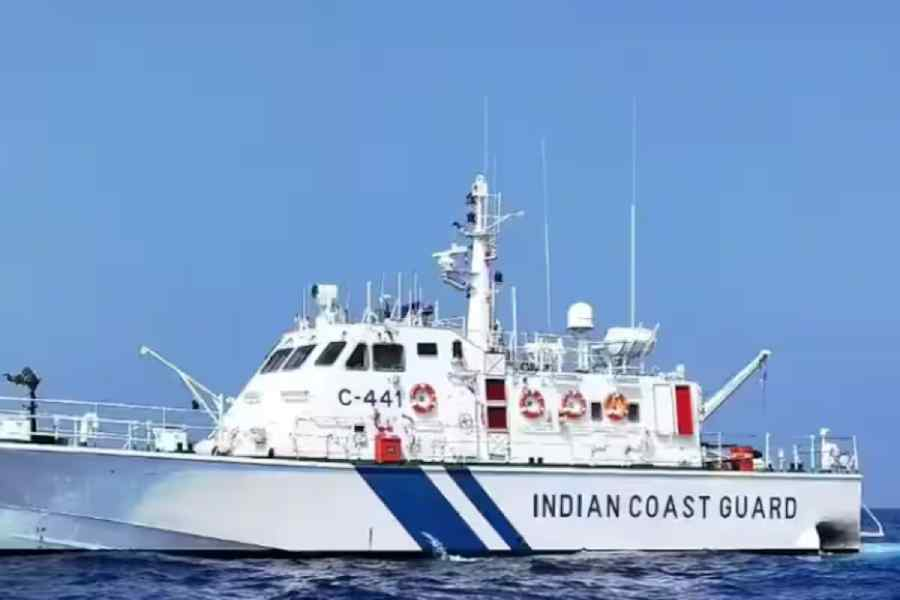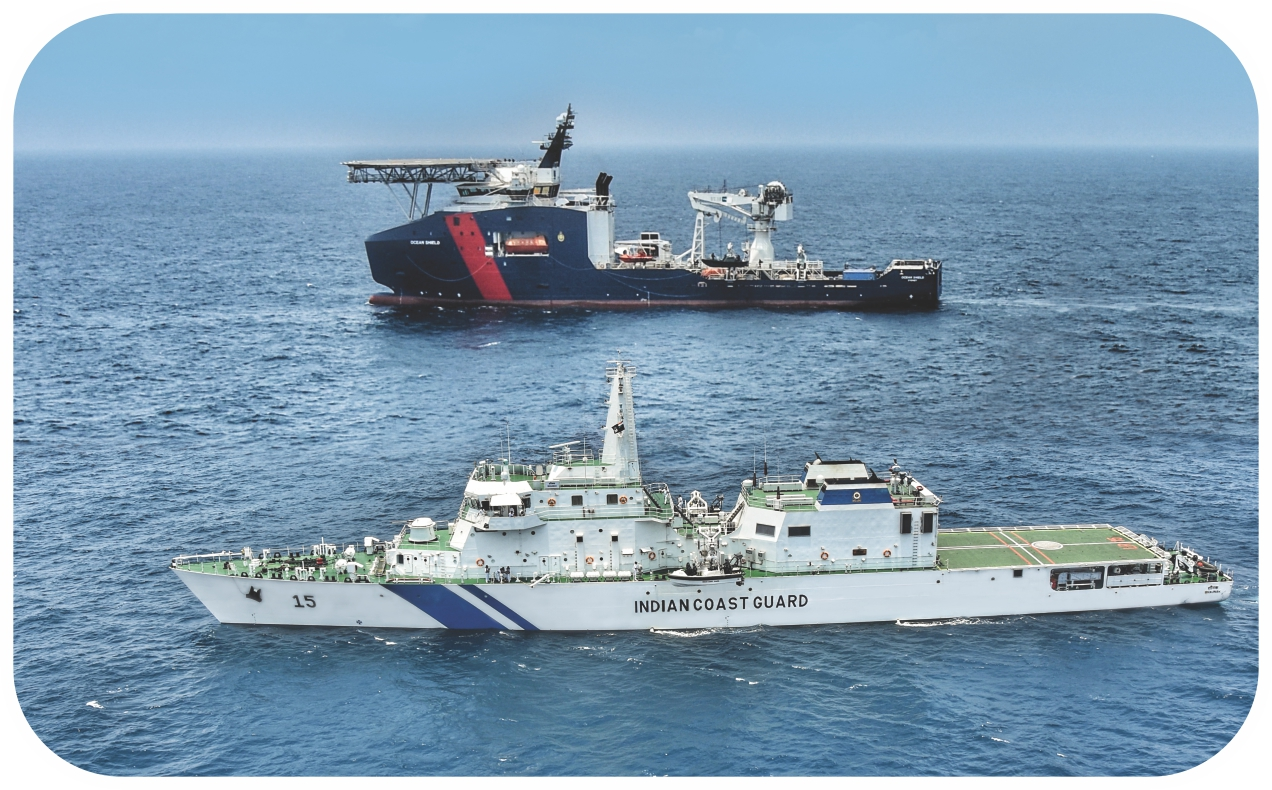On Sunday, the Indian Coast Guard (ICG) undertook a daring two-hour chase to rescue seven Indian fishermen captured by a Pakistani ship near the India-Pakistan maritime boundary.
This dramatic incident underscores the relentless commitment of the ICG to safeguarding Indian waters and its citizens, even in the face of hostile actions.
The fishermen, aboard the ill-fated fishing boat ‘Kaal Bhairav,’ were safely brought back, although their vessel was tragically damaged and sunk during the confrontation.
The Rescue Operation: A Two-Hour Chase
The Indian Coast Guard’s intervention began following a distress call at 3:30 PM on Sunday. The fishermen aboard the ‘Kaal Bhairav’ reported that a Pakistani ship had captured members of their crew near the No-Fishing Zone (NFZ) of the India-Pakistan maritime boundary. Responding swiftly, the ICG deployed a vessel to intercept the Pakistani ship and rescue the fishermen.
For over two hours, the ICG pursued the Pakistani Maritime Security Agency (PMSA) ship, which had attempted to retreat with the captured fishermen. Demonstrating strategic prowess and determination, the ICG ship made it unequivocally clear to the PMSA that no hostile actions would be tolerated in Indian waters. Amid the high-seas drama, the ICG managed to safely retrieve all seven fishermen.
Indian Coast Guard ship chases Pakistani vessel carrying detained Indian fishermen, rescues them after 2-hour chase in Arabian Sea, and brings them safely to shore.#IndianCoastGuard #India pic.twitter.com/7Lix15RZq1
— Cinemas Now (@Cinemasnow_) November 19, 2024
The chase, which involved high-speed maneuvers and coordinated communication, showcased the ICG’s tactical expertise and operational efficiency. The video shared by the ICG highlighted the intensity of the pursuit, cementing its reputation as a formidable maritime force.
The Fate of the ‘Kaal Bhairav’
While the fishermen were rescued successfully, the incident took a toll on their vessel, the ‘Kaal Bhairav.’ During the confrontation, the boat was damaged and eventually sunk. The exact circumstances leading to the boat’s sinking remain under investigation.
Read : Saudi Arabia Executes Record 101 Foreigners Including 21 Pakistani and 3 Indian
This tragic loss emphasizes the perilous conditions fishermen often face near disputed maritime boundaries. For these fishermen, who rely on their boats for their livelihood, such incidents not only jeopardize their lives but also inflict severe economic hardship. The ICG’s prompt action in this case prevented a greater tragedy, ensuring the safety of the fishermen despite the loss of their vessel.
Post-Rescue Investigation and Implications
After the fishermen were brought safely back to Okha Harbour on November 18, a joint investigation was launched involving the Indian Coast Guard, state police, and intelligence agencies. The inquiry aims to ascertain the series of events that led to the collision, the motives behind the PMSA’s actions, and measures to prevent such incidents in the future.
This incident underscores the complexities of operating near the India-Pakistan maritime boundary, a region fraught with tensions and overlapping territorial claims.

For the ICG, the operation is a testament to its readiness to respond swiftly and decisively to protect Indian interests. For policymakers, it serves as a reminder of the need for robust diplomatic and security measures to safeguard fishermen operating in sensitive zones.
The daring rescue operation by the Indian Coast Guard highlights their unwavering commitment to national security and the safety of Indian citizens. The two-hour chase not only thwarted the Pakistani ship’s attempts to capture the fishermen but also sent a strong message about India’s resolve to protect its maritime boundaries.
As the rescued fishermen recover from their ordeal, this incident will likely lead to intensified efforts to ensure the safety and security of those who navigate the challenging waters near the India-Pakistan maritime boundary. The Indian Coast Guard’s actions exemplify the courage and dedication needed to confront such challenges head-on.
let’s enjoy few years on earth with peace and happiness….✍🏼🙏

